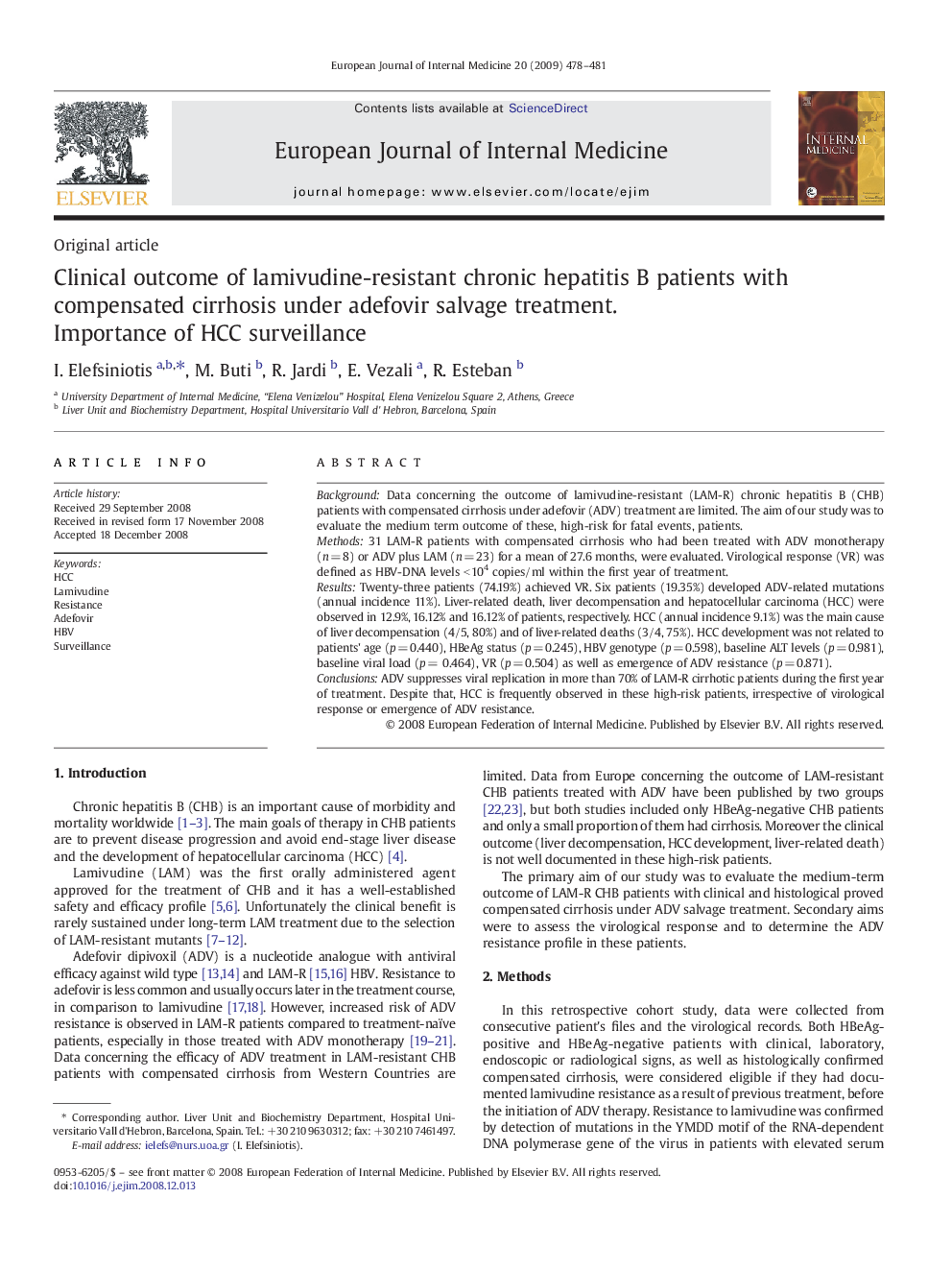| Article ID | Journal | Published Year | Pages | File Type |
|---|---|---|---|---|
| 3467717 | European Journal of Internal Medicine | 2009 | 4 Pages |
BackgroundData concerning the outcome of lamivudine-resistant (LAM-R) chronic hepatitis B (CHB) patients with compensated cirrhosis under adefovir (ADV) treatment are limited. The aim of our study was to evaluate the medium term outcome of these, high-risk for fatal events, patients.Methods31 LAM-R patients with compensated cirrhosis who had been treated with ADV monotherapy (n = 8) or ADV plus LAM (n = 23) for a mean of 27.6 months, were evaluated. Virological response (VR) was defined as HBV-DNA levels < 104 copies/ml within the first year of treatment.ResultsTwenty-three patients (74.19%) achieved VR. Six patients (19.35%) developed ADV-related mutations (annual incidence 11%). Liver-related death, liver decompensation and hepatocellular carcinoma (HCC) were observed in 12.9%, 16.12% and 16.12% of patients, respectively. HCC (annual incidence 9.1%) was the main cause of liver decompensation (4/5, 80%) and of liver-related deaths (3/4, 75%). HCC development was not related to patients' age (p = 0.440), HBeAg status (p = 0.245), HBV genotype (p = 0.598), baseline ALT levels (p = 0.981), baseline viral load (p = 0.464), VR (p = 0.504) as well as emergence of ADV resistance (p = 0.871).ConclusionsADV suppresses viral replication in more than 70% of LAM-R cirrhotic patients during the first year of treatment. Despite that, HCC is frequently observed in these high-risk patients, irrespective of virological response or emergence of ADV resistance.
